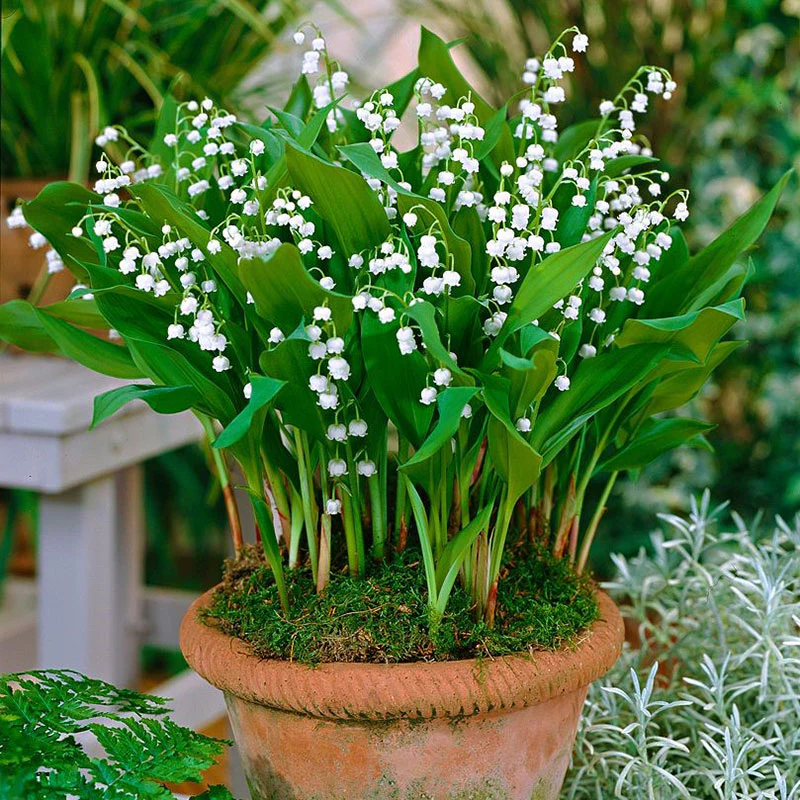Discover how to grow and care for Pink Lily of the Valley, a charming and delicate flower. Get tips on planting, maintenance and adding these unique blooms to your garden.
Have you ever come across the enchanting Pink Lily of the Valley? These delicate, bell-shaped flowers are a lesser-known variety of the classic white Lily of the Valley, offering a soft, rosy hue that can add a touch of magic to any garden. In this guide, we’ll explore everything you need to know about growing and caring for these charming blooms, from planting to maintenance and beyond.
What is Pink Lily of the Valley?

Before we dive into care tips, let’s get to know this lovely plant:
- Scientific name: Convallaria majalis var. rosea
- Family: Asparagaceae
- Native to: Temperate regions of the Northern Hemisphere
- Bloom time: Late spring to early summer
- Height: 6-12 inches (15-30 cm)
- Spread: 12-18 inches (30-45 cm)
Pink Lily of the Valley shares many characteristics with its white counterpart but stands out with its soft pink flowers. These plants are known for their sweet fragrance and dainty appearance, making them a favorite for woodland gardens and shaded areas.
How to Grow Pink Lily of the Valley

Planting
- Timing: Plant in early spring or fall
- Location: Choose a shaded or partially shaded spot
- Soil: Well-draining, rich in organic matter, slightly acidic to neutral pH
- Spacing: Plant pips (rhizomes) 4 inches apart and 1 inch deep
- Watering: Water thoroughly after planting
Care Tips
- Light: Prefers shade to partial shade
- Water: Keep soil consistently moist but not waterlogged
- Soil: Amend with organic matter annually
- Fertilizer: Apply a balanced, slow-release fertilizer in early spring
- Temperature: Hardy in USDA zones 3-8
- Humidity: Enjoys moderate to high humidity
Maintenance and Propagation
Pruning
- Remove yellowed or damaged leaves as needed
- After flowering, allow foliage to die back naturally to replenish the rhizomes
Dividing
- Divide clumps every 3-5 years to prevent overcrowding
- Best done in early spring or fall
- Replant divisions immediately
Pest and Disease Management
While generally resistant, Pink Lily of the Valley can sometimes face issues:
- Pests: Watch for slugs and snails
- Diseases: Susceptible to fungal leaf spot in overly wet conditions
Incorporating Pink Lily of the Valley in Your Garden
These delicate blooms can add charm to various garden settings:
- Woodland gardens: Create a natural, forest-floor look
- Shade gardens: Pair with other shade-loving plants like ferns and hostas
- Container gardens: Grow in pots for a splash of color on patios or balconies
- Ground cover: Use as a low-growing, spreading plant in shaded areas
- Cut flowers: Include in spring bouquets for a touch of pink and sweet fragrance
Important Considerations
While beautiful, Pink Lily of the Valley comes with some cautions:
- Toxicity: All parts of the plant are toxic if ingested, so keep away from children and pets
- Invasiveness: Can spread aggressively in ideal conditions; consider containment methods if needed
- Rarity: Pink varieties can be harder to find than white; check specialty nurseries or online sources
Pink Lily of the Valley offers a unique twist on a classic woodland plant, bringing soft color and sweet fragrance to shaded gardens. With proper care and attention to their specific needs, these delicate blooms can thrive and multiply, creating a beautiful carpet of pink bells each spring.
Remember, patience is key when growing Lily of the Valley. It may take a year or two for newly planted pips to establish and bloom fully. But once they do, you’ll be rewarded with a low-maintenance, long-lived plant that brings joy year after year.
Whether you’re looking to add a touch of whimsy to a woodland garden, create a fragrant ground cover, or simply enjoy these charming flowers in a shaded corner, Pink Lily of the Valley is sure to delight. Happy gardening!
Learn more about companion plants for Lily of the Valley
Discover other shade-loving perennials
Remember, gardening is an ongoing learning experience. Don’t be afraid to experiment and adapt your care routine as you get to know your Pink Lily of the Valley plants. With time and attention, you’ll be enjoying these delicate pink blooms in your own garden oasis.